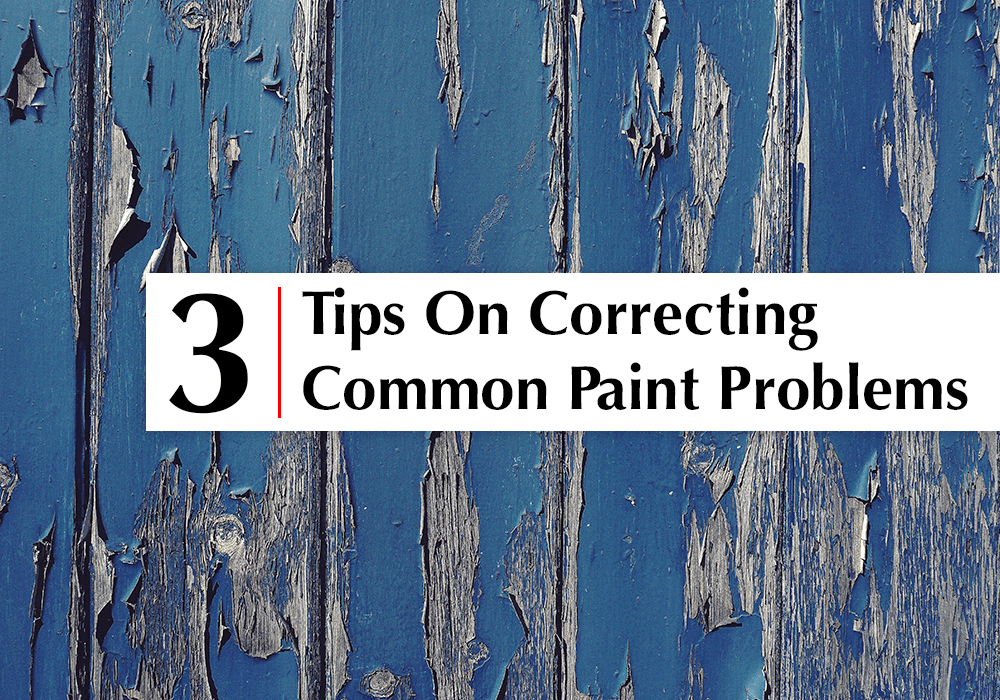3 Tips On Correcting Common Paint Problems

Interior Painting & Decorating: Do’s and Don’ts for Small Rooms
June 24, 2019
Essential Tips for Painting Your Kitchen
July 10, 2019If your home in San Diego is experiencing paint problems, you need to act fast before further damage takes place. When painting a home, we always advise homeowners to use the best quality paints and hire experienced and skilled residential painters in San Diego. That way, your paint will last longer and you will experience fewer paint problems along the way.
However, as the years go by, paint eventually begins to breakdown progressively as a result of exposure to harsh weather elements, organic growth, temperature fluctuation, humidity, and moisture. Normal tear and wear, as well as stains and fingerprints on your paint can also make your painted surface look dated or unappealing.
If you’ve found yourself in this position, chances are you’re wondering whether you should repaint your entire home or simply fix the specific issues. Well, that decision majorly depends on the extent of the problem or the damage. If the problem covers a significantly large area of your wall, you might want to do a full repaint. However, for minor paint failures, a touch up can do. Here are the three most common paint failures and how to fix them.
1) Peeling/Flaking
Paint peeling or flaking is an advanced sign of paint failure, and typically occur in old houses or houses that haven’t been painted in a while. Paint flaking is primarily caused by moisture that gets its way behind the paint film. This can be through the side of the siding that is not painted or neglected hairline cracks in the paint film. The absorbing and drying of moisture behind the paint film results in swelling and drying, which eventually results in the paint breaking away from the siding.
Using low-quality paints and poor surface preparation are also other common causes of paint peeling. To fix this problem, scrap all layers of loose paint, sand the surface to a smooth and even finish and then apply a primer. Paint using quality latex paint in a similar color to the previous paint.
2) Blistering
This is one of the most common problems that affect both the interior and exterior. Blistering is essentially the formation of blisters or bubbles under the paint film, and it can look rather unappealing if it’s extensive. This typically occurs when moisture trapped under the paint film gets heated and tries to escape causing the paint film to lift off the surface.
Blistering is commonly caused by painting over hot or damp surfaces and sometimes applying an oil-based paint over latex paint. Similar to peeling, scrap off the blistering loose paint and the surface until it’s smooth and even, and apply one coat of quality primer before painting over the area. While at it, don’t paint when it’s too hot or humid, or when there is a possibility of showers.
3) Alligatoring/Checking
Alligatoring and checking is the failure in the paint film that cracks to resemble the skin of an alligator. This is commonly associated with oil-based paints that have aged, especially around door and window frames.
Alligatoring can be caused by expansion and contraction of the painted surface, painting over an old layer of paint, and use of glossy or oil enamel over latex paint. To fix this, start by removing all the traces of old paint, and sand the area until it’s smooth. Next, apply a primer and allow it to dry before repainting using a flexible, latex-based/ high-quality acrylic paint.
The Bottom Line
The above three are the most common and probably the most unappealing paint failures most homeowners come across. Following the above quick fixes should help restore the appeal and protective properties of your paint job. However, as earlier mentioned, if the paint failure is extensive, it’s advisable to call professional residential painters like Peek Brothers Painting for help.





